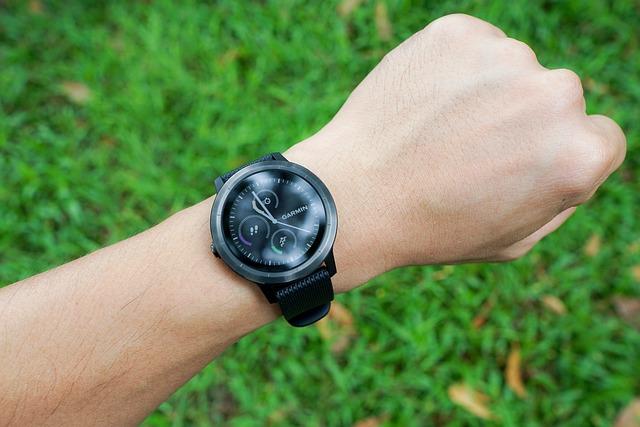As our world becomes increasingly interconnected, technology continues too evolve, offering innovative solutions that cater to various needs.Among the most poignant applications of these advancements is their role in supporting seniors living with dementia—a condition that frequently enough presents unique challenges for both individuals and their caregivers. Wearable technology has emerged as a beacon of hope, providing tools that not only enhance safety and security but also foster independence and dignity. In this article, we explore the top wearable devices designed specifically for seniors with dementia, delving into their key features, usability, and the potential they hold in transforming the daily lives of those affected by this condition. Join us as we navigate through the landscape of accessible technology, where empathy meets innovation, creating a brighter future for seniors and their families.
Innovative Health Tracking: Wearable Technology That Monitors Vital Signs
Wearable technology has revolutionized health monitoring, offering a range of devices designed to assist seniors, notably those with dementia. these wearables integrate advanced sensors that continuously monitor vital signs, ensuring caregivers have real-time insights into the health status of their loved ones. A few standout features include:
- Heart Rate Monitoring: Enables tracking of heart rhythms and can alert caregivers to abnormal rates.
- fall Detection: automatically identifies falls and sends alerts to emergency contacts.
- GPS Tracking: Provides location tracking, ensuring that seniors can be found quickly if they wander off.
- Medication Reminders: Sends timely alerts to help promote adherence to medication schedules.
These devices not only enhance safety but also encourage independence by allowing seniors to engage in daily activities with confidence. Many wearables feature user-kind designs catered to seniors,ensuring ease of use. A summary of key options includes:
| Device Name | Key Feature | Battery Life |
|---|---|---|
| Fitbit Inspire 2 | Heart Rate Monitoring | 10 Days |
| Apple Watch Series 7 | Fall Detection | 18 Hours |
| Samsung Galaxy Watch 4 | GPS Tracking | 40 Hours |
| AliveCor KardiaMobile | ECG Monitoring | battery-operated |

User-Friendly Designs: Simplifying Accessibility for Seniors
Designing wearables for seniors with dementia requires a thoughtful approach that prioritizes ease of use and clarity. Large buttons and high-contrast colors can significantly reduce confusion, allowing users to navigate seamlessly. Instead of intricate menus, opting for a minimalist interface ensures that seniors can quickly access essential features without feeling overwhelmed. Furthermore, voice commands can introduce a layer of convenience, enabling users to interact with their devices by simply speaking, which can be especially helpful for those who may struggle with fine motor skills.
Another key aspect is the incorporation of haptic feedback and auditory cues to reinforce actions.For instance,a gentle vibration when a button is pressed can provide reassurance that the desired command has been executed. Additionally, having emergency alert functions clearly visible on the main screen can enhance safety and provide peace of mind for both seniors and caregivers. To illustrate the user-friendly design features more clearly, refer to the table below:
| Feature | Benefits |
|---|---|
| Large Buttons | Easy to press for users with limited dexterity |
| High-Contrast Displays | Improved visibility for those with visual impairments |
| Voice Activation | Hands-free operation for added convenience |
| Emergency Alerts | Fast response capability enhances safety |
| Haptic Feedback | Reassurance of successful interaction |

Stay Connected: Communication Features to enhance Safety and Engagement
Effective communication tools are crucial for enhancing the safety and engagement of seniors with dementia. Wearables equipped with real-time messaging capabilities enable caregivers to stay in constant touch with their loved ones, providing reassurance and support even from a distance. Features like voice commands, automated alerts, and location tracking ensure that seniors can easily access help when needed. Additionally, these devices frequently enough allow for customizable emergency contacts, ensuring that in a moment of confusion, the senior can quickly reach out to someone familiar who can assist them.
Another enriching aspect of these wearables is their ability to facilitate social interactions. Simple video calling and photo sharing features promote connection with family and friends, which can significantly improve emotional well-being.Some wearables are designed with large, easy-to-navigate interfaces, helping seniors engage without frustration. The following table summarizes key communication features that enhance user experience:
| Feature | Description |
|---|---|
| Real-time Messaging | Instant communication with caregivers and loved ones. |
| Voice Commands | Hands-free operation for ease of use. |
| Location Tracking | Allows caregivers to monitor the user’s location for safety. |
| Video Calling | Facilitates face-to-face interactions with family and friends. |
| Emergency contacts | Quick access to familiar people in case of distress. |

Memory Aids and Stimulating Activities: Empowering Seniors Through Cognitive Support
Engaging seniors with dementia through stimulating activities not only enhances cognitive function but also fosters a sense of independence and empowerment.Wearable technology emerges as a powerful ally in this endeavor, providing essential features tailored to the unique needs of seniors. These devices often incorporate reminder systems,which can gently prompt users about daily tasks or medications,thereby reducing anxiety and confusion. Moreover, many wearables are designed with user-friendly interfaces that cater to limited dexterity, ensuring ease of use even for those with physical challenges.
Incorporating features like location tracking can also aid caregivers, offering peace of mind by ensuring that seniors remain safe, even when they roam independently. Many devices also promote social interaction through built-in communication tools, allowing seniors to connect with loved ones effortlessly. Experience has shown that when wearables deliver a combination of cognitive support and stimulating activities, they not only enhance memory but also contribute to improved well-being and quality of life. Below is a simple table comparing key wearables that excel in these areas:
| Device | Key Features | Usability |
|---|---|---|
| Fitbit Inspire 2 | Fitness tracking, medication reminders | Simple swipe interface, large display |
| Apple Watch series 7 | Fall detection, heart rate monitoring, SOS feature | Touchscreen, customizable watch faces |
| AliveCor KardiaMobile | ECG monitoring, heart health tracking | One-touch operation, instant results |
To Conclude
As technology continues to evolve, so too does our ability to enhance the lives of those living with dementia.The wearables discussed in this article stand at the intersection of innovation and compassion, offering not just functionality but also a sense of security and connectivity for seniors and their caregivers. By embracing these tools,we can empower our loved ones to navigate their daily lives with greater ease and confidence,all while providing peace of mind for family and friends.
In a world where the challenges of dementia can feel overwhelming, these wearables serve as a reminder that solutions are within reach. They bridge the gap between independence and support,fostering a sense of autonomy while keeping loved ones close. As we move forward, let us continue to explore and advocate for advancements that prioritize usability and empathy, ensuring that every senior has access to the resources they need to thrive. Embrace the future, not just for those affected by dementia, but for all of us who cherish the moments shared with them.





